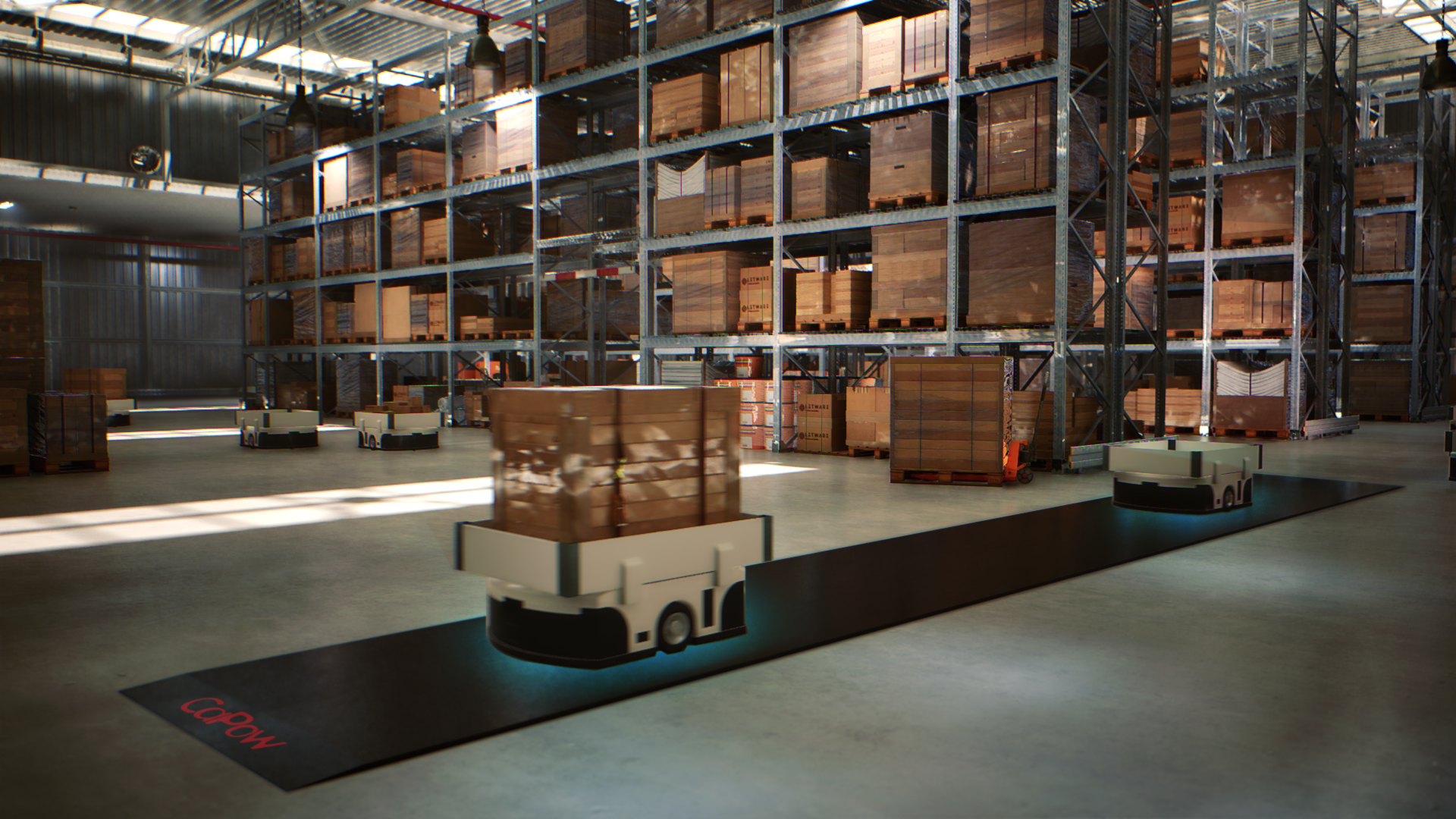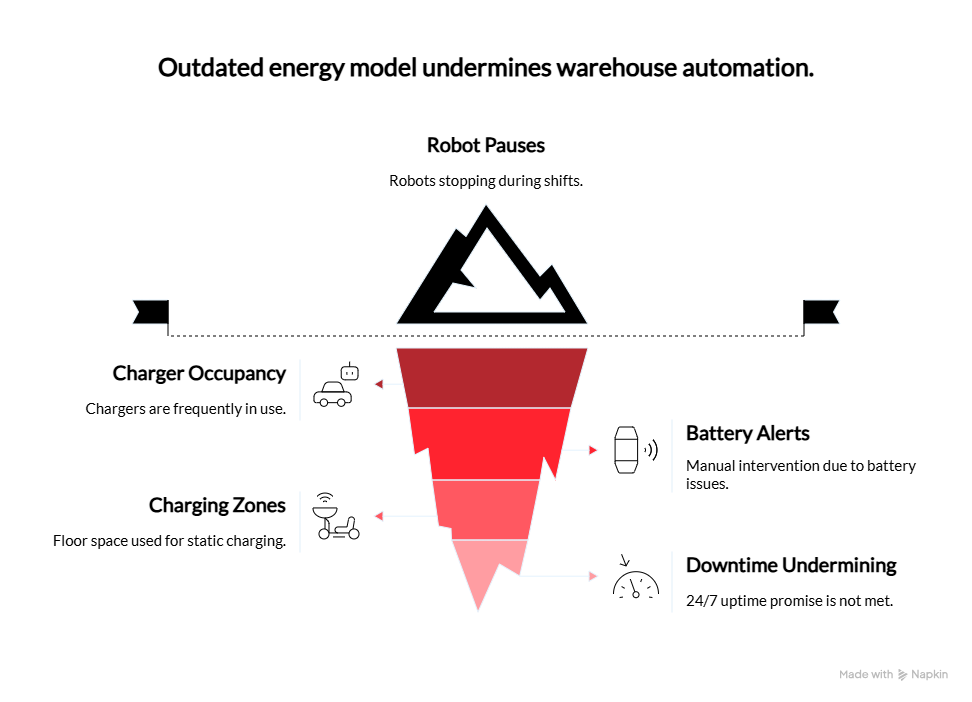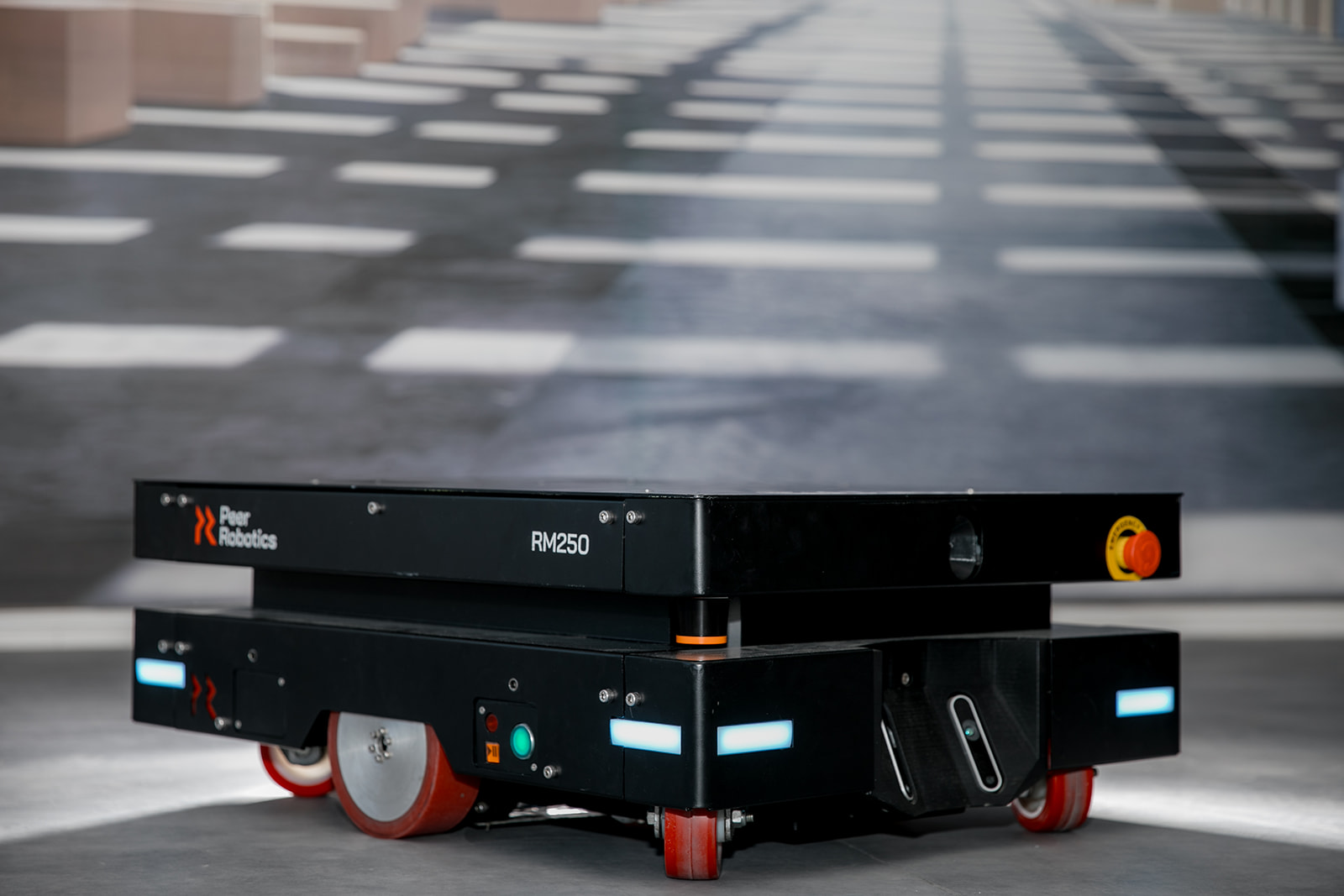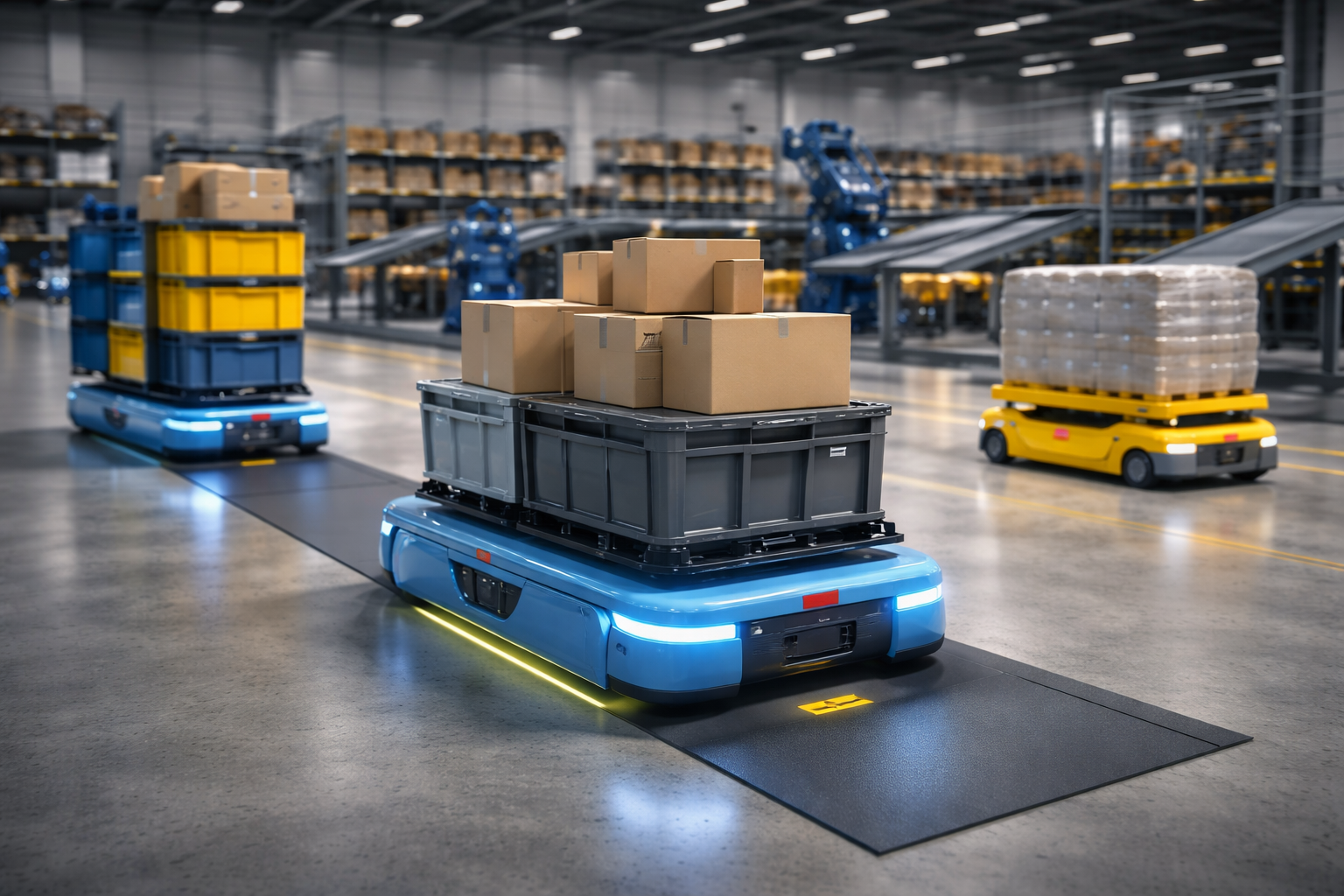Warehouses and industrial operations are accelerating automation at unprecedented speed. Robots are navigating complex environments, handling goods, sorting, scanning, and transporting with precision. On the surface, everything appears optimized.
But look closer and a different picture emerges.
Robots are pausing mid-shift. Chargers are occupied. Battery alerts are triggering manual intervention. Floor space is being consumed by static charging zones. And the promise of 24/7 uptime is quietly undermined by something most teams are not even measuring.
The problem is not the robots. It is the outdated energy model behind them.
Static Energy Is Undermining Dynamic Systems
Automation was designed for flow. Mobile robots were built to move. Yet most still operate on a stop-to-charge schedule. They follow pre-programmed routes only to return to fixed points for energy. This is not just inefficient. It is contradictory.
We have dynamic, intelligent, autonomous fleets powered by a static, rigid infrastructure.
While software evolves and workflows optimize, charging remains a bottleneck. Robots idle. Operators buffer time for energy breaks. Teams swap batteries between shifts. Floorplans are compromised. Throughput is throttled.
And all of this is accepted as “normal.”
Measuring the Real Cost of Downtime
Charging delays are rarely captured as a line item, but the losses are real.
Each robot that pauses for two hours a day forfeits roughly 500 productive hours per year. Multiply that across a fleet of 30 units and you are looking at 15,000 hours lost annually. This does not include manual labor tied to battery management, or the cascading delays from peak-time congestion at docking zones.
Static charging also demands valuable floor space. Charging zones reduce usable square footage and constrain layout flexibility. Add to that the maintenance burden and labor overhead, and the energy model quickly becomes a drag on performance and profitability.
Automation is meant to unlock scale. But if power cannot keep up, scale becomes expensive.
A Different Question: What if Robots Never Had to Stop?
That is the question some of the most advanced operators are now asking.
Instead of scaling chargers, they are rethinking the role of energy. Instead of asking robots to go get power, they are building systems where power meets the robot.
CaPow’s Power-in-Motion platform is built for this shift. It delivers energy to robots while they operate. No docking. No alignment. No downtime.
It is not a marginal improvement. It is a structural change.
With in-motion power delivery:
- Robots remain in continuous operation
- Battery capacity can shrink, reducing cost and weight
- Charging zones are eliminated, freeing floor space
- Manual battery handling is reduced or removed entirely
- Fleet uptime becomes predictable and stable
This shift allows automation to perform at its full potential. Not in bursts. Not with breaks. But as a constant, flowing system.
Why This Moment Matters
The number of robots inside facilities is growing year over year. According to a 2025 market report by WiseGuy Reports, the global market for fully automated charging stations is projected to exceed 200 billion dollars by 2032, driven largely by demand from robotics, logistics, and shared mobility.
But this growth cannot be supported if charging infrastructure continues to rely on physical alignment, static docks, or manual battery management.
Operators who want to future-proof their systems need to build energy delivery into the fabric of the operation. As analysts have observed, the value of automation is increasingly tied to how seamlessly systems operate across the entire flow- not just in isolated steps.
That means thinking beyond hardware and looking at energy as a layer that travels with the robot and adapts to motion.
In-motion energy is not a feature. It is a foundation.
From Reactive Energy to Embedded Power
CaPow’s floor antenna system is modular. It integrates into existing layouts without the need for major construction. It adapts to different robot types. And it delivers power even when the robot is misaligned or in motion.
This level of adaptability means less time designing for power, and more time optimizing for output. It means no more downtime for recharging, and more uptime for revenue-generating tasks. It means automation that does what it was meant to do: run, not wait.
And unlike traditional charging models, this infrastructure does not ask for floor space, cables, or attention. It simply works in the background, continuously.
The Next Evolution of Automation
As automation becomes more central to manufacturing, logistics, fulfillment, and retail, the systems that support it must evolve. Energy is one of the last invisible frictions in mobile robotics. Solving it requires more than smarter batteries. It requires a smarter approach to delivery.
According to TechTime’s coverage, CaPow’s Power-in-Motion platform is already proving its value in mission-critical deployments, offering wireless energy without docking, downtime, or detours.
The future is not faster robots. The future is infrastructure that no longer asks them to slow down.




